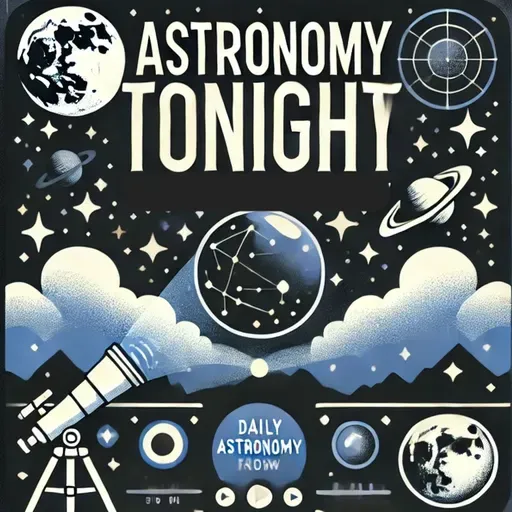
About
This is your Astronomy Tonight podcast.
On this day in astronomy, September 11th, we commemorate a truly electrifying event that occurred back in 1979. On this date, Pioneer 11 became the first spacecraft to fly by Saturn, sending shivers of excitement through the scientific community and space enthusiasts alike.
Picture this: A small, intrepid spacecraft, no bigger than a car, hurtling through the vast emptiness of space at over 28,000 miles per hour. After a journey of six and a half years and more than 3.2 billion kilometers, Pioneer 11 finally reached its target – the majestic ringed planet, Saturn.
As it zipped past Saturn at a distance of just 21,000 kilometers from the planet's cloud tops, Pioneer 11 began furiously snapping photos and collecting data. It was like a cosmic paparazzi, capturing the first-ever close-up images of Saturn's stunning ring system and mysterious atmosphere.
But the excitement didn't stop there! Pioneer 11 also discovered two previously unknown moons of Saturn and even detected a new ring. It was like finding loose change in the couch cushions of the cosmos – unexpected and thrilling!
The data sent back by Pioneer 11 was a treasure trove for scientists. It revealed that Saturn has a magnetic field much stronger than Earth's and a core temperature of about 10,000 degrees Celsius. Talk about a hot topic!
This flyby was a game-changer, paving the way for future missions like Voyager and Cassini. It's safe to say that without Pioneer 11's daring reconnaissance, our understanding of the solar system's second-largest planet would be rings behind where it is today.
So the next time you gaze up at the night sky and spot that pale yellow dot, remember the little spacecraft that could – Pioneer 11 – and its historic flyby on this day in 1979.
Don't forget to subscribe to the Astronomy Tonight podcast for more celestial stories and cosmic chronicles. If you're hungry for more fascinating content, check out QuietPlease.AI. Thank you for listening to another Quiet Please Production. Keep looking up, space fans!
On this day in astronomy, September 11th, we commemorate a truly electrifying event that occurred back in 1979. On this date, Pioneer 11 became the first spacecraft to fly by Saturn, sending shivers of excitement through the scientific community and space enthusiasts alike.
Picture this: A small, intrepid spacecraft, no bigger than a car, hurtling through the vast emptiness of space at over 28,000 miles per hour. After a journey of six and a half years and more than 3.2 billion kilometers, Pioneer 11 finally reached its target – the majestic ringed planet, Saturn.
As it zipped past Saturn at a distance of just 21,000 kilometers from the planet's cloud tops, Pioneer 11 began furiously snapping photos and collecting data. It was like a cosmic paparazzi, capturing the first-ever close-up images of Saturn's stunning ring system and mysterious atmosphere.
But the excitement didn't stop there! Pioneer 11 also discovered two previously unknown moons of Saturn and even detected a new ring. It was like finding loose change in the couch cushions of the cosmos – unexpected and thrilling!
The data sent back by Pioneer 11 was a treasure trove for scientists. It revealed that Saturn has a magnetic field much stronger than Earth's and a core temperature of about 10,000 degrees Celsius. Talk about a hot topic!
This flyby was a game-changer, paving the way for future missions like Voyager and Cassini. It's safe to say that without Pioneer 11's daring reconnaissance, our understanding of the solar system's second-largest planet would be rings behind where it is today.
So the next time you gaze up at the night sky and spot that pale yellow dot, remember the little spacecraft that could – Pioneer 11 – and its historic flyby on this day in 1979.
Don't forget to subscribe to the Astronomy Tonight podcast for more celestial stories and cosmic chronicles. If you're hungry for more fascinating content, check out QuietPlease.AI. Thank you for listening to another Quiet Please Production. Keep looking up, space fans!